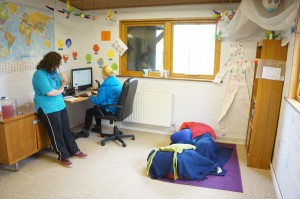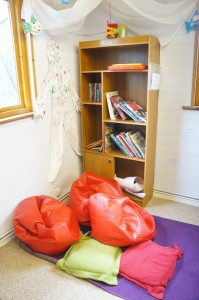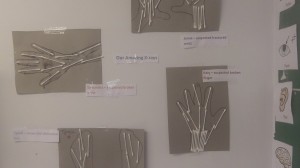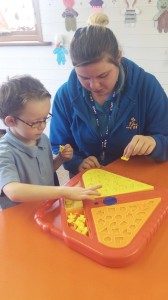Alternative Education
“In 2014, ten children who passed through our alternative education programme have successfully gained new school placements. Five others have been supported to remain within their existing school set-up, which is a real achievement.” Emma Minett - Hop Skip and Jump Cheltenham
We have developed our alternative education programme to help support children experiencing difficulties in school. Alternative education allows children aged 5-18 the opportunity to be nurtured outside of the traditional school environment by our team of specialist care workers, trained to help them understand and manage their emotions and remove barriers to learning. We provide these children with valuable skills that help them in their development and enable them to go on to live fulfilling, independent lives. By providing a safe learning environment, we not only ensure these children are able to continue their education, but are also preventing these children from negative external influences.
We provide a roll on, roll off access to provision that accommodates children from as little as a couple of hours a week, all the way up to full school days, 5 days a week. Each child receives individually tailored support to ensure that they are given the care that they need to achieve their full potential. We discuss each child’s requirements with parents, county social workers and school SENCOs, and ensure this is provided in a non-formal learning environment and through supported play therapy, geared to each individual’s needs. We carefully monitor each child’s progress, reporting back to parents on achievement and keep detailed records in order to ensure that their new school is aware of their progress.
Alternative education is available at all of our centres - please contact your local centre supervisor for additional information on how we can help.
Case Study 2
Student Y was referred to us as they struggled both socially and emotionally, making it difficult for them to work within the school environment without being disruptive or causing distractions. Student Y was prone to lashing out throughout the day, becoming a threat and distraction to others. This included shouting, making verbal threats, swearing and intimidation towards others. From this they had a lack of concentration and motivation, resulting in minimal work being completed in school. As a result they were behind with their work and completed tasks to a lower standard than that expected of them. We had Student Y on a part-time basis, before successfully placing them in a better-suited school placement.
Student Y struggled to work alongside others, and showed little interest in their work. Before leaving Hop Skip and Jump Student Y learnt to work along side others, completing work whilst showing a strong level of interest and enthusiasm towards it. Student Y was able to remain focused for much longer periods of time, demonstrating strong levels of concentration and would not be distracted. The student also grew in independence, doing things for themselves and only sought attention from adults when a problem could not be solved without adult intervention. From this, the student learnt to not isolate themselves from others, joining in team tasks, taking part in discussions and listening well in groups. Student Y was able to respond to others in a much more considerate manner, answering politely without teasing, swearing, name calling or intimidation. Student Y also learnt to relax in an educational environment, without being anxious or fearing failure. They left demonstrating good self-esteem, is no longer shy and is better able to cope with change and try new things with a positive attitude,
None of this was achievable before our intervention.
Education Gallery
Case Study 1
Student X was referred to us as they were unable to cooperate within the school environment, displaying a range of undesirable behaviour including absconding, vandalism, verbal threats and physical violence. Before successfully settling into a new school, Student X was with Hop Skip And Jump full-time over three terms and within this time the improvement seen in them was overwhelming.
At first Student X had problems building bonds with people and was unable to interact with them in a respectful and appropriate manner. Before leaving us Student X grew in confidence, listening and responding to both peers/adults in an effective manner, showing great consideration and being tolerant of others. Student X also learnt to read social situations, and would do well to avoid confrontation, showing understanding and sympathy towards them, as opposed to becoming aggressive. In addition, their speech became coherent, thinking before responding to others. As a result they were able to work collaboratively, respecting the feelings, thoughts and opinions of others, and ensure no one felt isolated from the group. Student X was also prone to vandalism and was often recorded damaging property. At Hop Skip and Jump they learnt to respect property and refrained from damaging, destroying or stealing.
Case Study 3
Student Z was referred to us as they struggled within the school environment due to not being able to make good choices and having no understanding of the danger or consequences of their disruptive behaviour. This included absconding, vandalism, verbal threats and physical violence. Studen Z was with us on a full-time basis over a three term period before finding a permanent school placement.
Student Z had no interest in school work and would often refuse to sit down and interact with others around him. If any work was completed, it would be rushed, with minimal effort put in. Before leaving, Student Z had learned to work systematically at a reasonable pace. This is due to the improvement in the student’s focus and willingness to co-operate and try their best with given tasks. Student Z learned not to seek unwanted attention through not interrupting unnecessarily or interfering with others whilst working. The student has learned to make good choices and soon began to understand boundaries and the importance of respecting them and working within them. As a result, the student was able to embrace the school environment and displayed a range of positive emotions, becoming a good role model for others. They are now cheerful, happy and helping others to work with the same level of motivation and enthusiasm that they have adopted.
Professional Feedback














